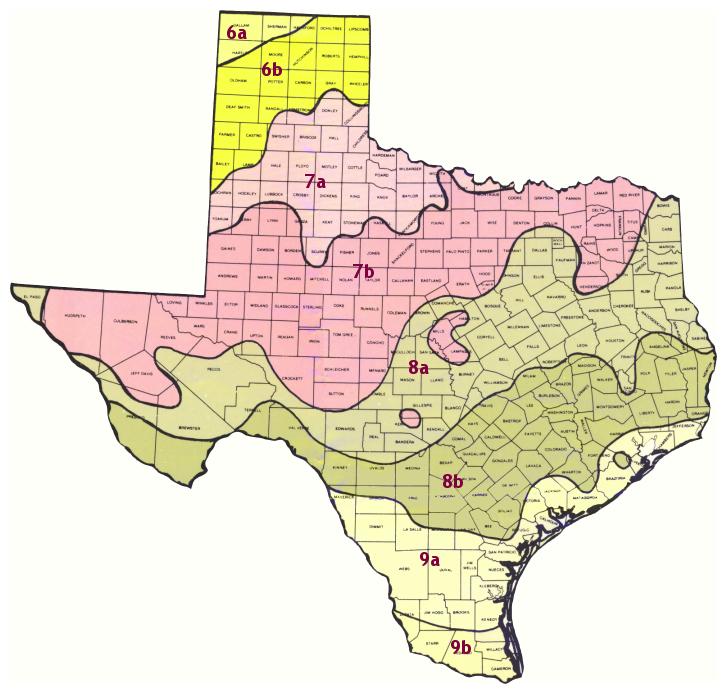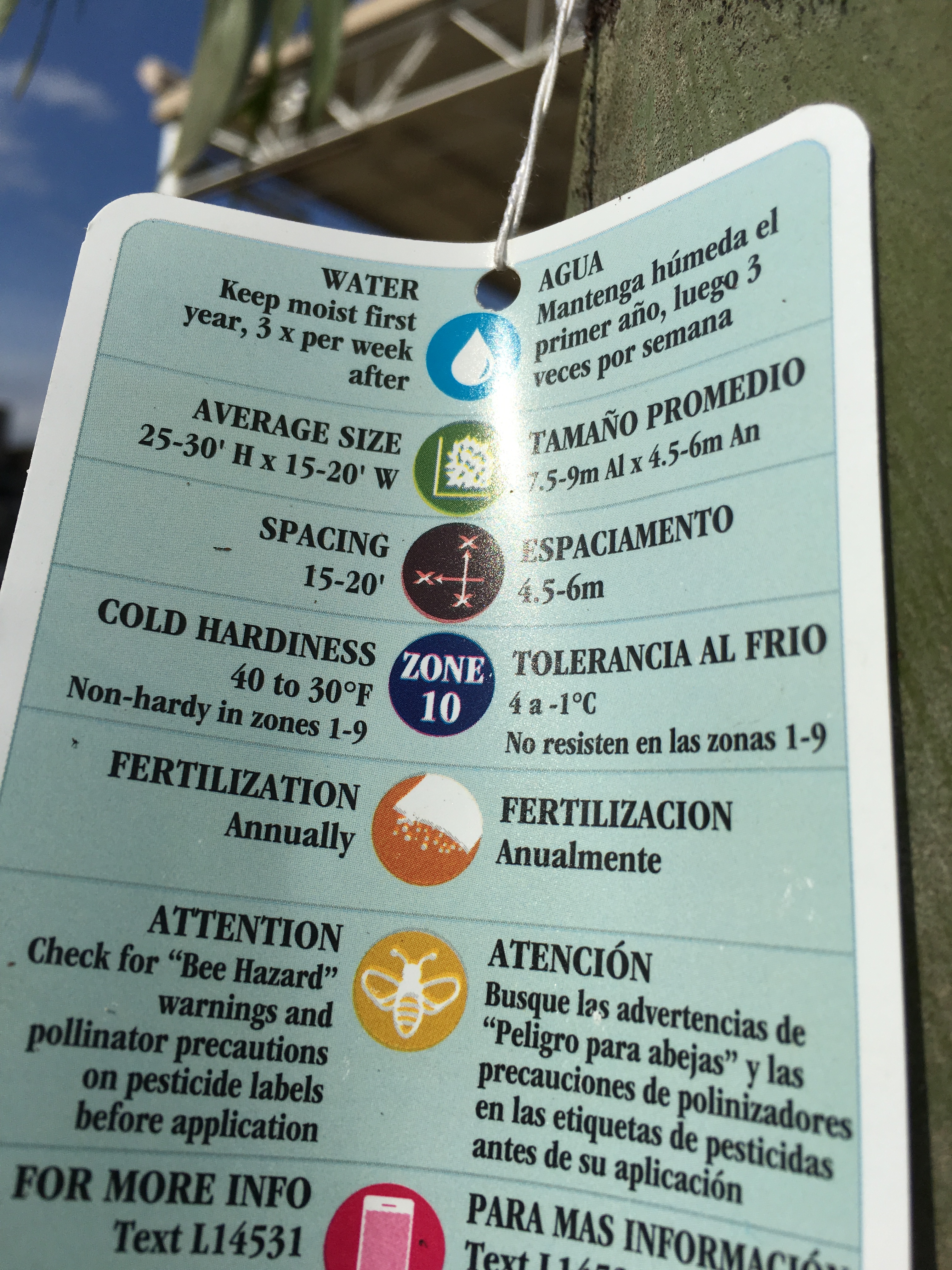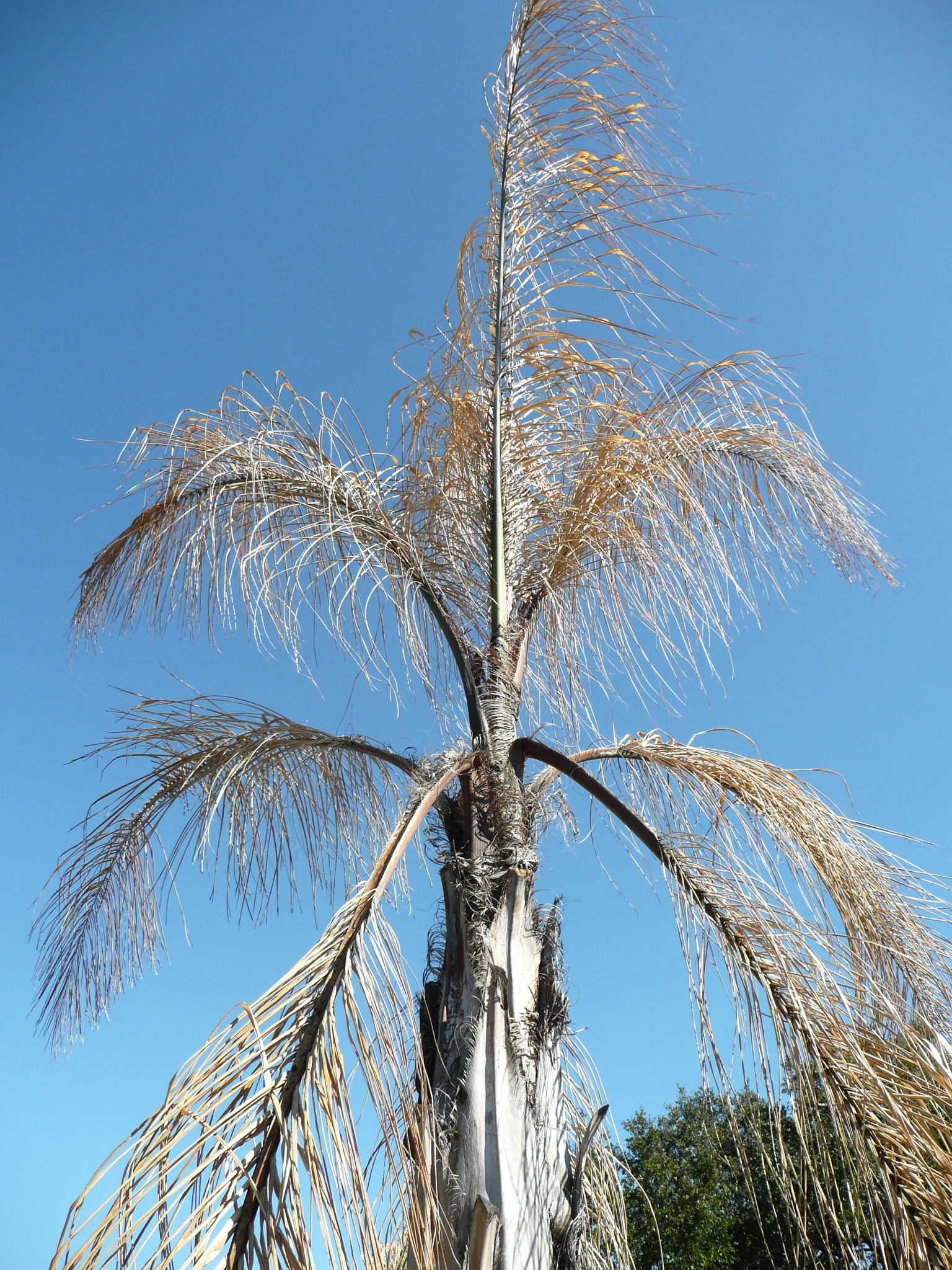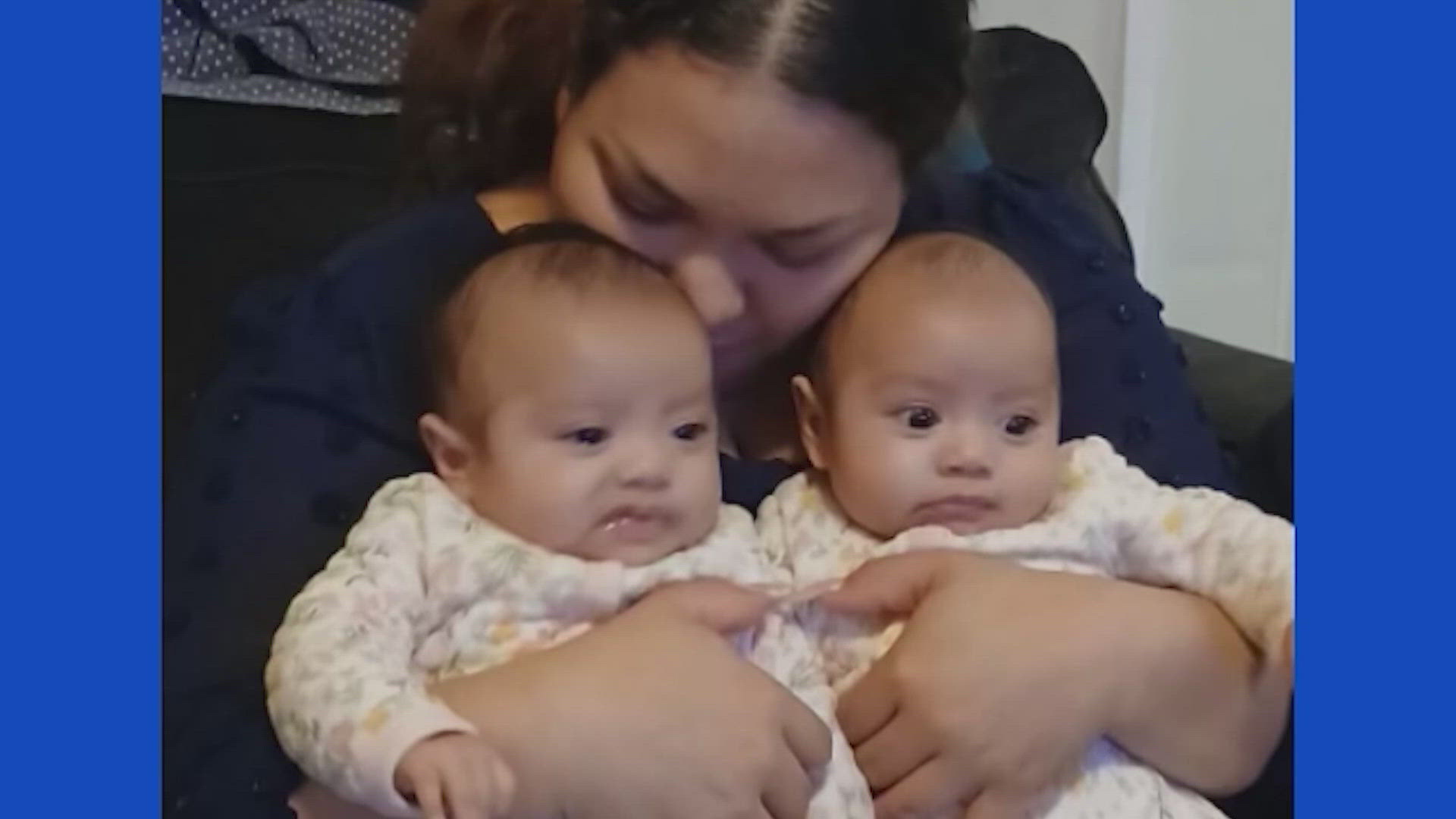While Houston's palm trees are plenty, only a select variety can survive our winters. Sometimes even the hardiest palms can get burned when exposed to extreme cold. There's evidence of this in Houston, as you can find brown, burned palm fronds hanging from Queen palms all over town due to a just a few cold nights last month.
I couldn't help but notice these poor foxtail palms for sale at a Houston-area garden center. Why do I feel bad for them? I know these won't survive our next winter.

How did I know? I've lost some plants which I thought would survive winter, and did some research to avoid this fate for the future. I found that the USDA created a handy map to save landscapers from guessing what will live and what will die. Growing, "zones" have been designated -- zones 1 thru 10 -- following the average coldest temperatures a region will see in any given winter. The lower the number, the more hardy the plant and the deeper the cold it can endure. We are in zone 8b and 9a. That means some subtropical varieties can live here, but more sensitive varieties will be damaged or killed on occasion, especially north of I-10.

If your plant is good to grow in zone 1-8 (freezing cold to subtropical zones), you can grow them in Houston without concern. If they're zone 9 and up (subtropical/tropical), like the label confirms for these foxtail palms, it's likely you're going to lose them this winter or next. (How many of us lost banana plants and hibiscus bushes this year? Those varieties are generally zoned for 9b-10+.)

In our part of the county, only a few palm species will thrive during all of our seasons.: Texas Sable palms are excellent to plant here because they're not only good to endure our brief cold snaps, but they're also drought tolerant. Mexican fan palms are popular because they grow fast and handle our extremes pretty well, though sometimes too much rain water in a season can brown their fronds. Chinese fan palms, Mediterranean Fan Palms, Pineapple Palms, palmetto bushes are also happy to grow here. If you live within 10 miles of the Gulf of Bay in the Houston area, Queen palms can do well, but it can be a risk. While they many survived this year from Pearland, points south -- some got severely burned by the cold in downtown Houston.
The only safe place to plant truly tropical palms like the Foxtail palm I found for sale at a local garden center, is in south Florida, the Keys and in Hawaii.
Of course, some enthusiasts do purchase tropical palm trees fully knowing that they were never intended to survive beyond the summer months here, and are used instead as temporary, "annual" decoration for pool patios, planted in pots. But, if you're looking for permanent plantings, knowing your growing zone can save you from some serious landscaping losses.



